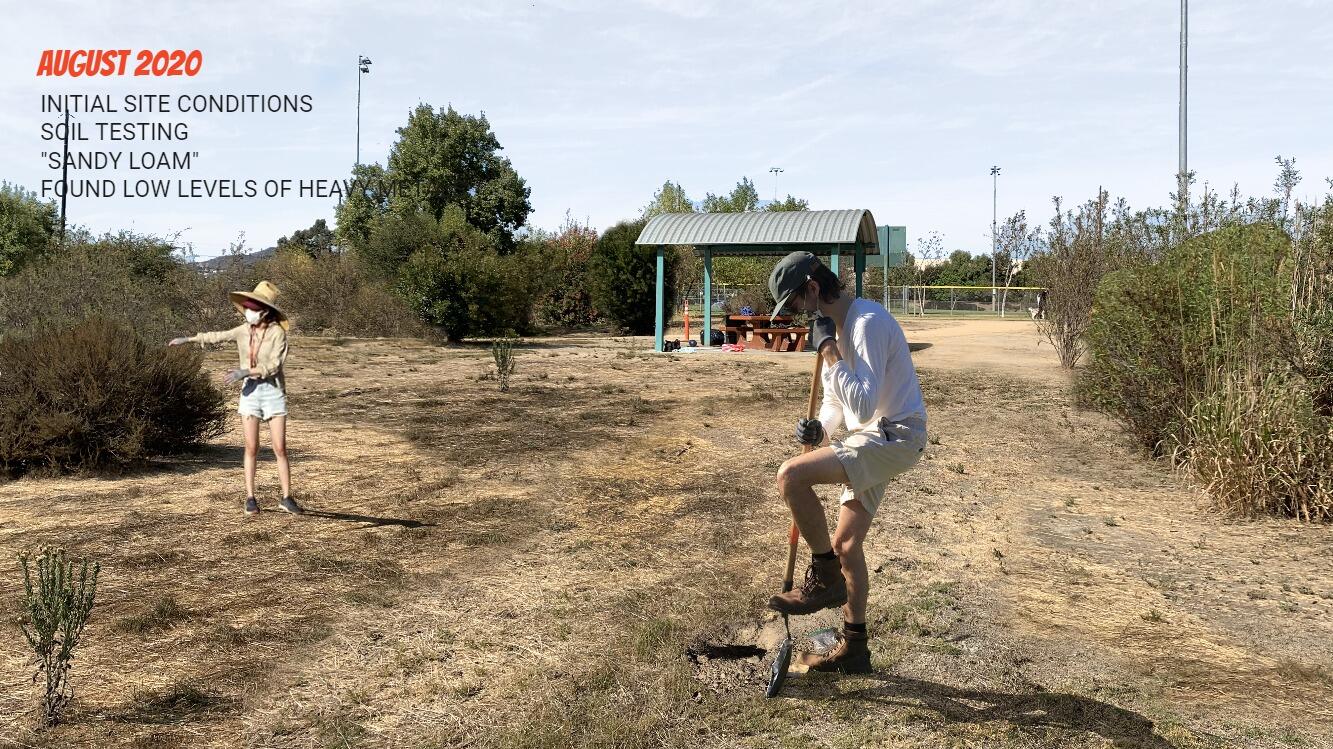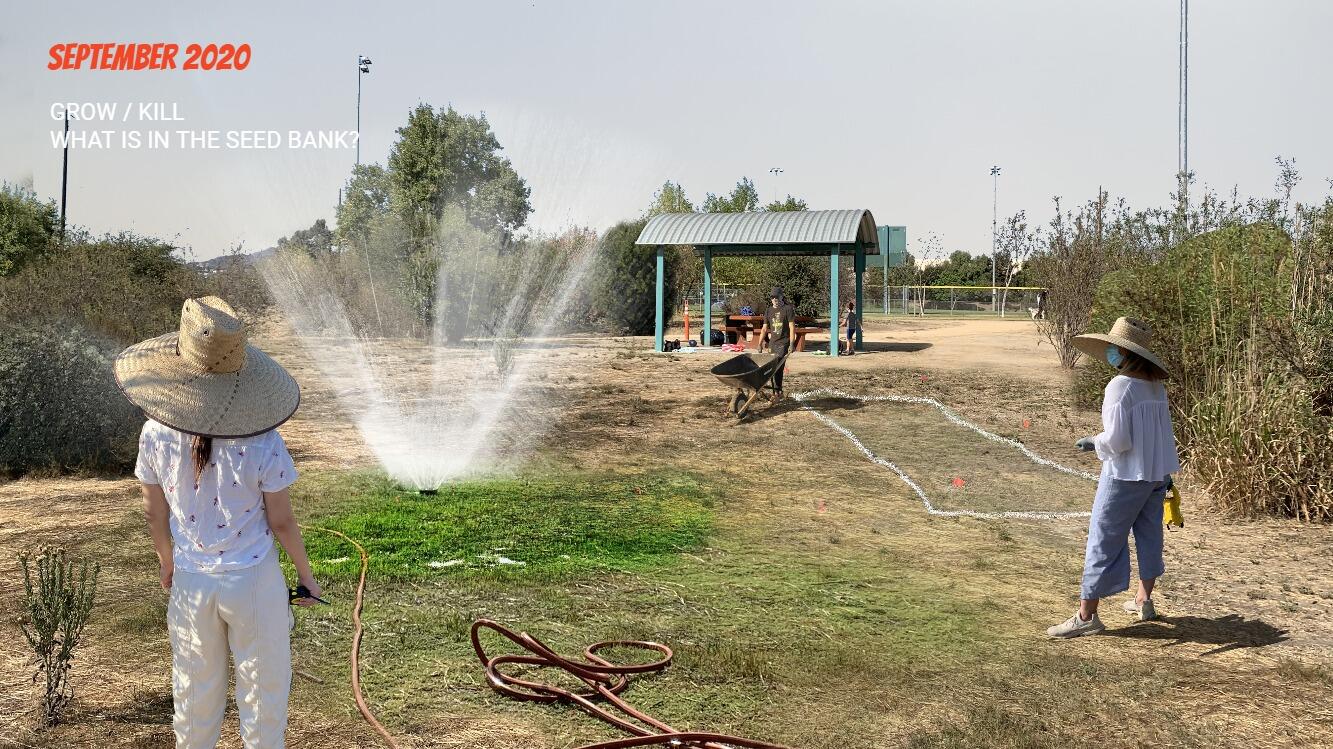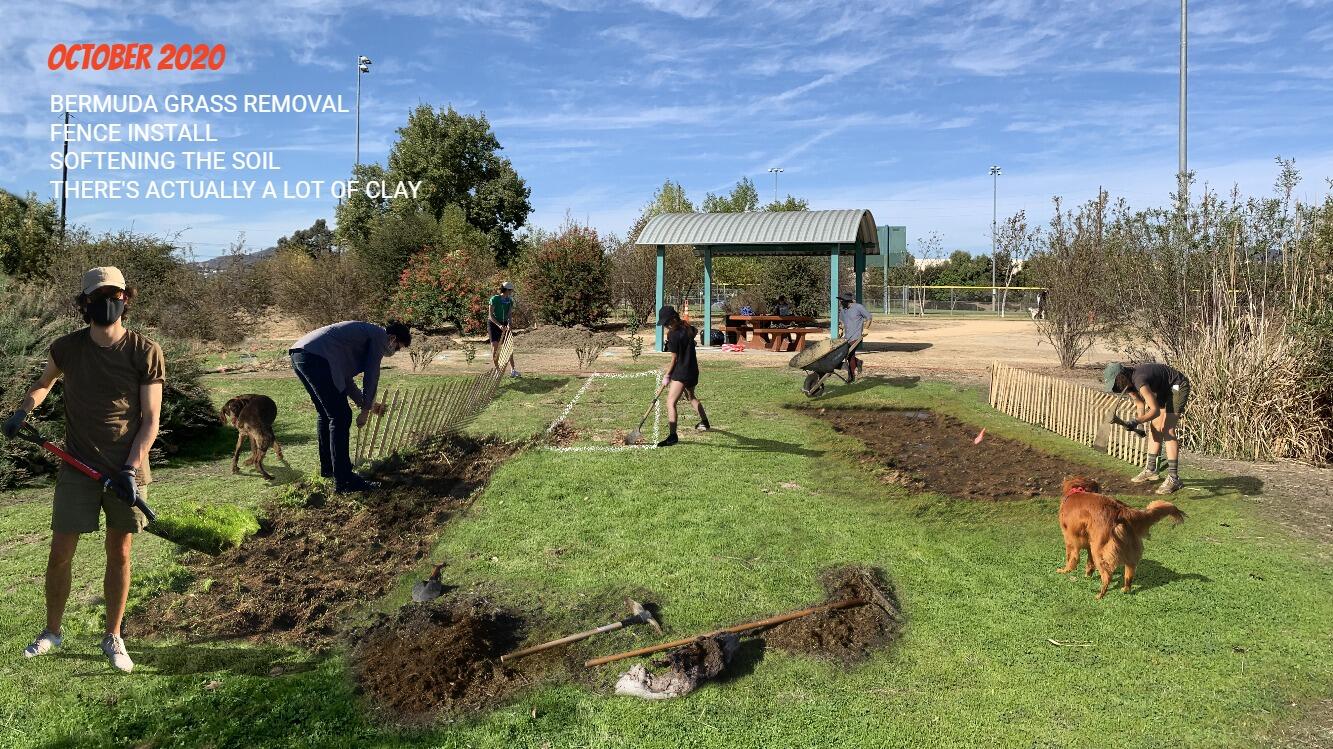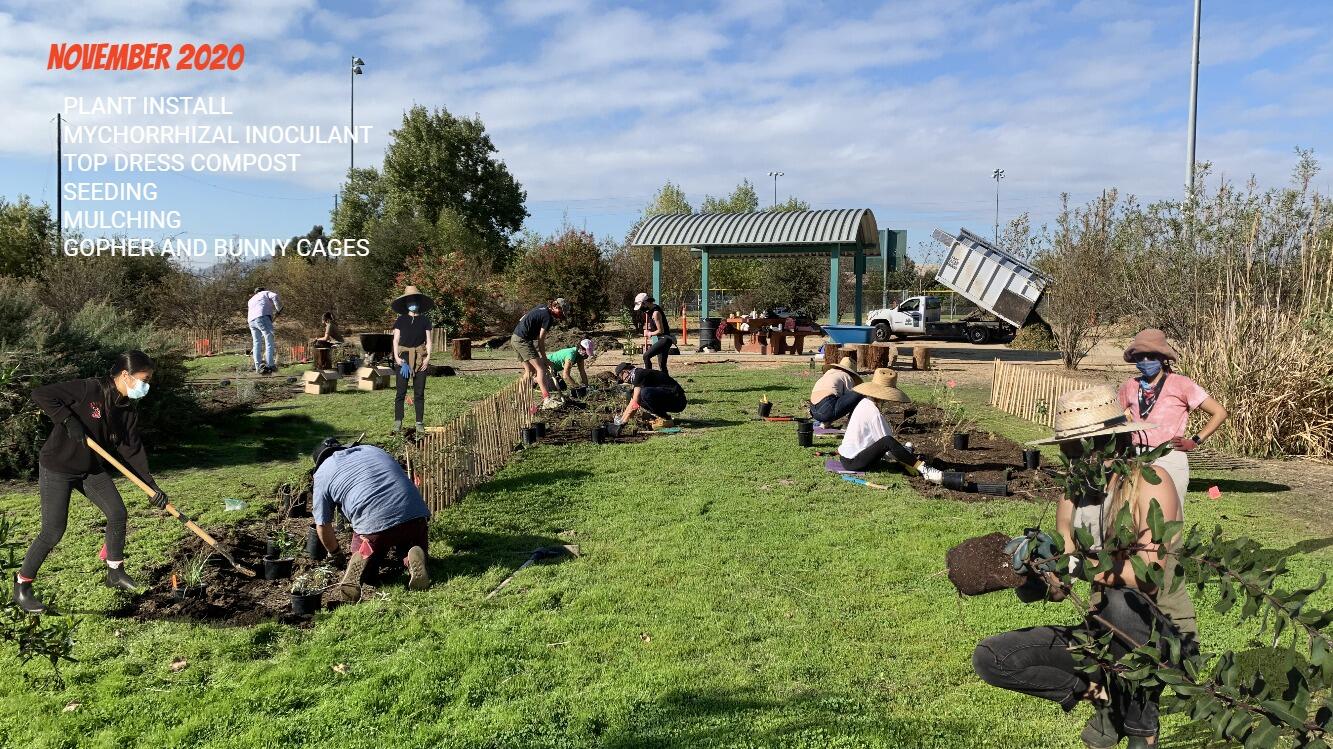Authors: Jen Toy & Jenny Jones
On your next trip to Rio de Los Angeles State Park or Elysian Park, please come visit the newly installed California native plant Test Plots! Designed and built by community members, students and landscape architects, these gardens serve as a new living laboratory, open to all. The idea for these gardens came from a few guiding principles:
- Bring back biodiversity
- Low-tech, low-budget
- Hands in the soil; maintenance is not a dirty word
- Honor and work with the seasons
- Water smart
- Experimentation is good
- Expansion and scalability in mind
- Seek a coalition of community groups
- Work somewhere between Native Gardening and Ecological Restoration

At Elysian Park, four Test Plots (installed Winter 2019) are located up on the hill by the Marian Harlow Grove. Near perfect circles, the shape of the Test Plots was informed by the throw of a sprinkler. These plots test microclimatic variables such as north and south facing slopes from part-shade to sunny conditions. The plant palette was chosen from oak woodland, chaparral and coastal sage scrub. A year in, while the Monkeyflower, Sages and Yerba Buena are flourishing, many of our grasses were decimated by gophers. These plots are now in their second year and were originally conceived as a partnership between RAP, the Citizen’s Committee to Save Elysian Park, and the landscape design firm Terremoto. Here is the website for more info: www.testplot.info.

This past Fall, we had an opportunity to install a second set of Test Plots at Rio de Los Angeles State Park to begin to replicate the idea in other parts of the city. Rio has proven a nice counterpoint to Elysian Park - While Elysian is up on the hill amidst largely unmaintained slopes, Rio is located down in the historic floodplain of the LA River and it’s native vegetation is maintained through a robust partnership between California State Parks and LA City’s RAP.

Through a design studio at the Department of Landscape Architecture at the University of Southern California, 12 graduate students analyzed the current soil, plant communities and usage patterns at Rio. They selected a site near the picnic pavilion behind the visitors center. The design incorporates the railway history of the site and uses the linear bands of the former railroad tracks as formal language to organize the plots. At this site, you will find 12 rectangular plots marked by lines of fences.
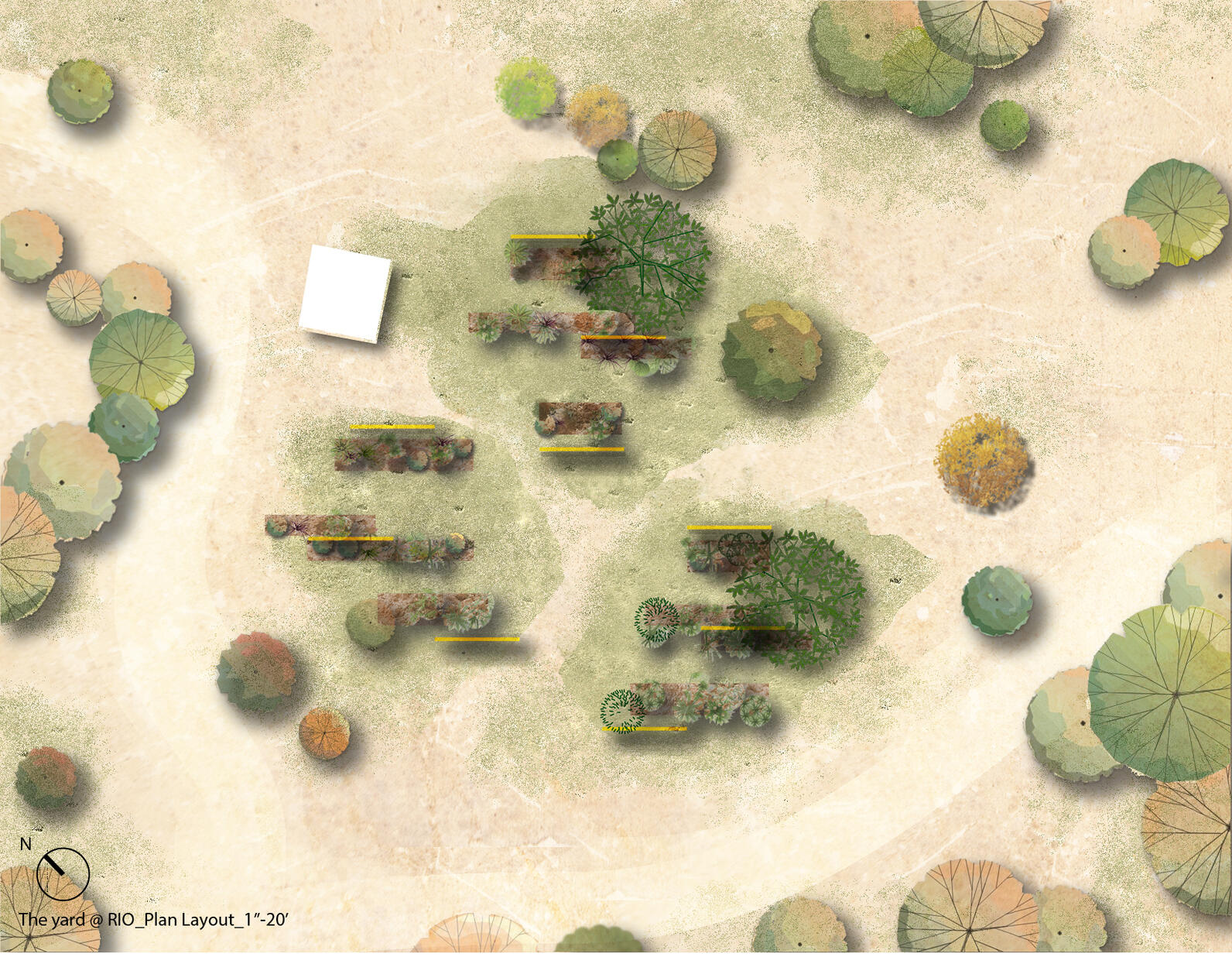
Installed in November 2020, the plant palette for these plots borrow from the historical floodplain and include coyote bush, goldenbush and milkweed. Upon advice from Audubon’s Tania Romero and lessons learned from Elysian, we installed rabbit cages around the grasses and gopher cages around the oak and walnut saplings. These plots also test the use of compost, mulch and inoculation with arbuscular mychorrhizal fungi, a fungus that forms a mutualistic relationship with vascular plants, helping plants uptake nutrients. The importance of mychorrhizal fungi and their role in how plants communicate with one another was recently discussed in a New York Times article called the Social Life of Forests.
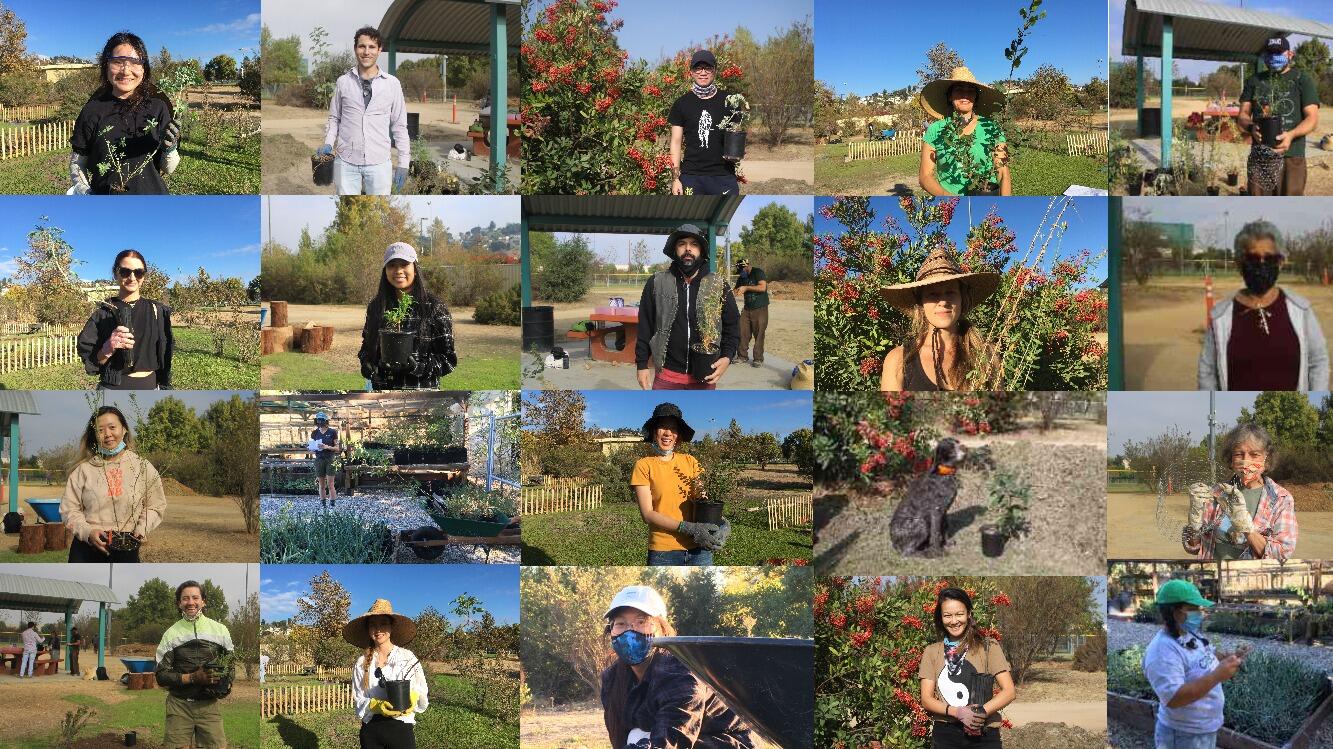
Community members and students will be monitoring and maintaining the gardens over the next several years. We will be evaluating different factors such as ecological metrics like soil structure and habitat creation; labor metrics such as carbon use and man hours; as well as social capacity metrics like community stewardship and educational programming. The intent for the research is to create a set of tools to study and understand the impact of the Test Plots over the next 3-5 years on both the local ecology and potential for engagement with community members.
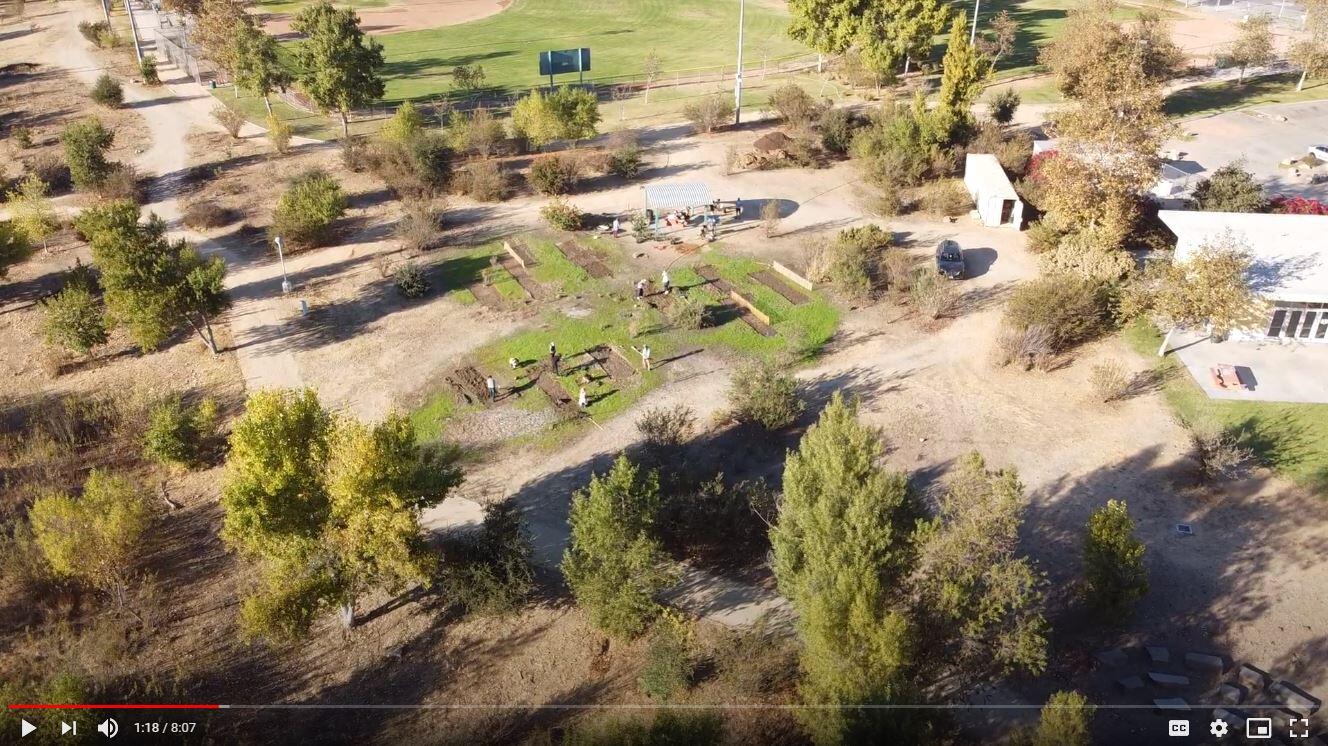
Finally, our larger goal is to celebrate the labor involved in land care and build a stronger land ethic in our community. We welcome community volunteers and site visits. If you would like to get involved please contact Jen Toy - jtoy@usc.edu
Special thanks to:
- USC SCHOOL OF ARCHITECTURE
- DEPARTMENT OF LANDSCAPE ARCHITECTURE + URBANISM
- AUDUBON CENTER @ DEBS PARK
- STATE PARK CHAMPIONS
- ANGEL CITY LUMBER
- LOS NOGALES NURSERY
- THEODORE PAYNE FOUNDATION
- LA COMPOST
- CHESBRO TREE CARE
- TERREMOTO

